
Precision Rolling Pins 101
Don’t you love it when you bite into a cookie that is thick and underbaked on one end, but thin and overbaked on the other? You don’t? Yeah, me neither.
If you use a standard rolling pin to make rolled-out cookies with any regularity, you know what a pain it can be to make sure your dough is perfectly even so that you don’t end up with slanted cookies of different thicknesses. This can cause issues with baking, since thinner dough obviously bakes faster than thicker dough, so an unlevel cookie risks being both over and under baked. If you do manage to roll out level cookies, there’s no guarantee you’ll match that exact thickness on your next rollout, leading your cookies to look inconsistent from tray to tray. Obviously not ideal.
Enter the Cookie Countess Precision Rolling Pin and its solid birch barrel that takes the guesswork out of rolling out dough. Available in four different sizes, this pin has a 16” rolling area that allows you to roll out large flats of dough while not having to sacrifice consistency. Let’s talk about some of the most frequently asked questions regarding these pins.
Q: How do I clean my pin?
A: Simply wipe the pin clean with a damp (not wet) cloth as needed. Do not submerge it in water, allow it to soak, or run it through a dishwasher. If you treat your pin with food-grade mineral oil periodically, you will create a barrier that keeps the wood from absorbing smells and oils during use.

Q: What is the best way to roll out my dough?
A: Placing a sheet of parchment paper on the bottom and top of the dough before rolling is the best way to keep dough from sticking to your pin. This will also keep your pin cleaner, as it will keep the wet ingredients from coming in direct contact with the wood of the pin.
Q: What is the difference between the sizes (¼”, 5/16”, 3/8”)?
A: It might help to think of the sizes using a common denominator: 4/16, 5/16, and 6/16. As you can see, there’s not a ton of difference between them, but in a cookie, the difference between 4/16 and 6/16 is extremely visible. A batch of dough rolled out with the 3/8” pin will make far fewer cookies than if you were to roll the same batch out with the ¼” pin.

Q: How do I know which one to use?
A: This is mostly going to come down to personal preference. If you prefer a chewier cookie with a higher dough-to-icing ratio, you’d want the 3/8” pin; if you like a thinner cookie with a more even ratio of dough to icing, then the 1/4” or 5/16” pin would be perfectly fine. I very often call the 5/16” pin our “Goldilocks” pin, since it bridges the gap between too-thin and too-thick—it’s just right. That being said, there are a couple of scenarios in which you would be better off using the 3/8” pin for a sturdier cookie:
- Cookie pops (where you will be inserting a cookie pop stick into your cutout dough before baking)
- Gingerbread houses
- Franken-cookies (where you mush two cutout shapes together to form a new cookie shape before baking)
I’m certainly not saying that you have to use the thicker pin for these scenarios—I promise, I’m not coming to your house to take your rolling pin away if you choose to do it differently. For cookie pops, for example, pushing a stick into a thicker dough without it coming out the back side is easier if you have a thicker dough to work with. But do what works for you.
Q: What about the 1/8” pin?
A: This pin is perfect for making pie crust! It rolls the perfect, even thickness every time, and the barrel is large enough to accommodate the diameter needed. You could certainly also use this pin for cookies if you want a thinner, crispier cookie.
Q: How do I store my pin?
A: You can either store it laying down in a drawer if you have space, or you can use our Wall-Mounted Rolling Pin Hanger. We have one size that specifically fits the 1/8", and a second one that fits the other 3 sizes.

Q: Let’s talk handles.
A: Sure—these pins have ‘em! The handles on our rolling pins spin, so it takes some of the strain off of your hands. If you prefer the rolling style of a French pin, you can certainly use your hands across the barrel of the pin to put pressure and roll your dough.
Recommended for You:
Piping Bag Tip Tube Covers - Set of 4
AtecoDon't let your icing bags leak or dry out! Use these covers on bags with Ateco couplers and standard tips on them. Reuse them again and again. Se...
View full detailsBlack Fine Tip Food Marker
The Cookie CountessA black edible-ink pen is essential for your decorating kit. Use these high quality markers for: Marking up baked cookies for planning designs Wr...
View full detailsStainless Steel Measuring Cups 4 Piece Set
The Cookie CountessIncredibly high quality, with no plastic parts. Whether baking or cooking you'll reach for these essentials again and again! THESE ARE THE LAST SET...
View full detailsInstant Royal Icing Mix - White Base
The Cookie CountessJust add water for white, stiff icing! Perfect for stenciling, dots and eyes, writing, or thin it for flooding. You can tint it any color you need...
View full detailsCookie Order Form 5 x 7, 50 sheets
The Cookie CountessThese cute sheets will help you plan your cookie orders. The back has an area for sketching and pricing planning. Size: 5" x 7" 50 Sheet Pad Doub...
View full details-

Cookier Takeaways
Read nowNine years ago this Halloween, I made my very first ever decorated sugar cookies. I had seen a video tutorial on Facebook, and after falling down a rabbit hole watching flooding video after flooding video, I thought to myself, “I...
-

Color Schemes
Read nowOne of the biggest considerations when designing a cookie set (aside from the shapes themselves) is the color scheme. And I don’t know about you, but very rarely do I find myself using bottled color as-is without mixing and tweaking...
-

Precision Rolling Pins 101
Read nowDon’t you love it when you bite into a cookie that is thick and underbaked on one end, but thin and overbaked on the other? You don’t? Yeah, me neither. If you use a standard rolling pin to make rolled-out...

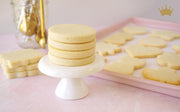

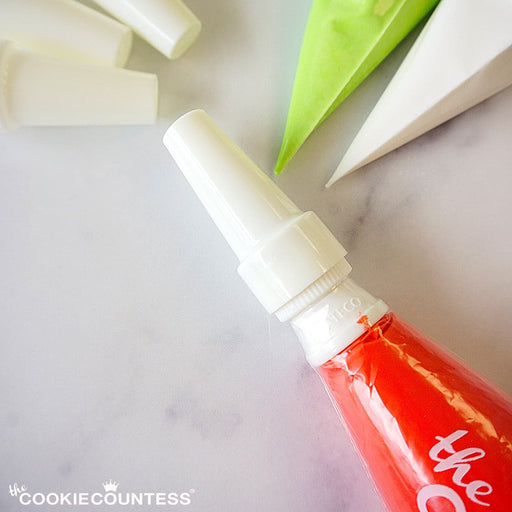
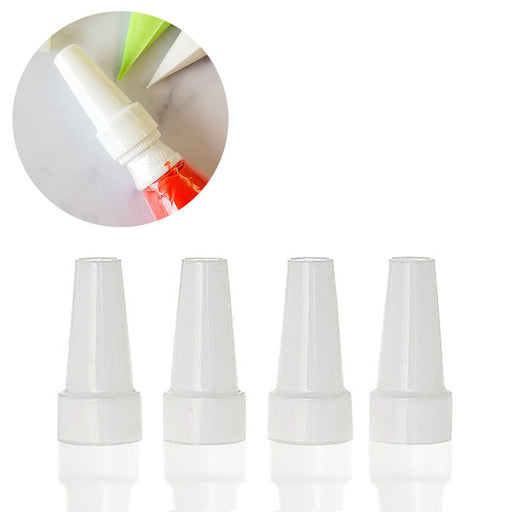
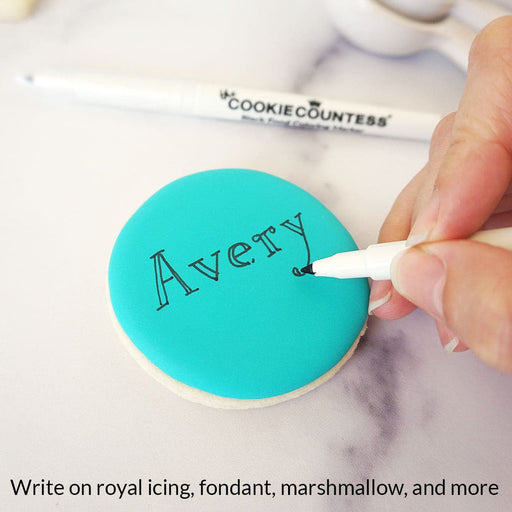
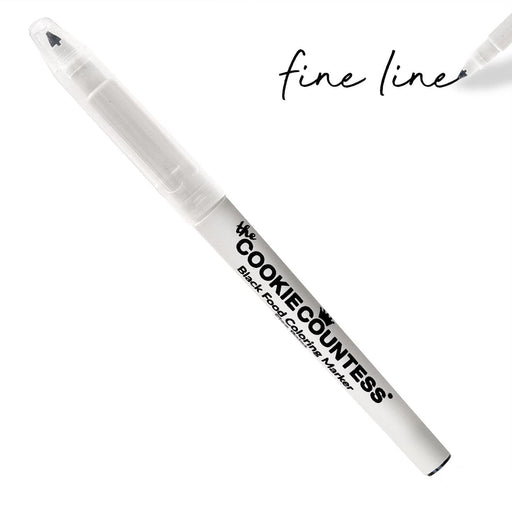
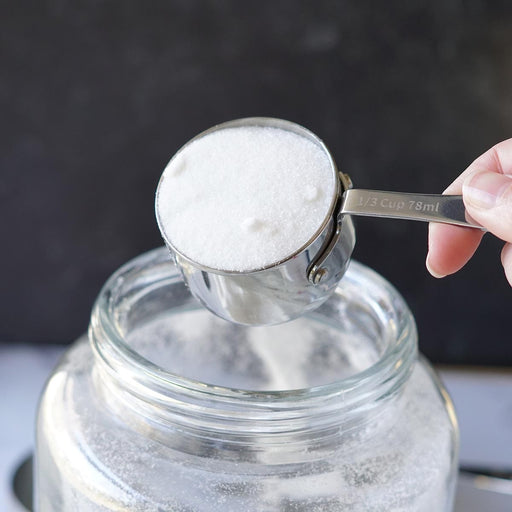
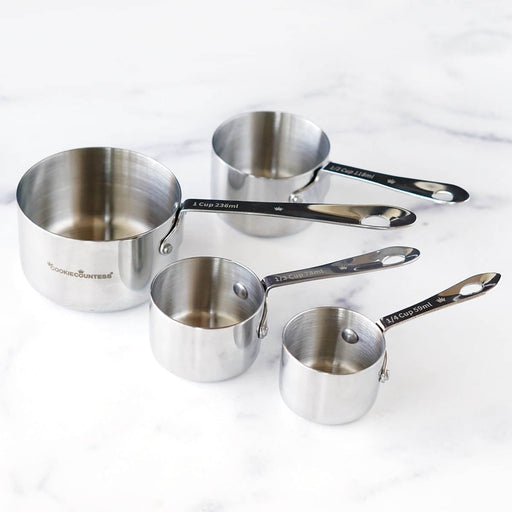
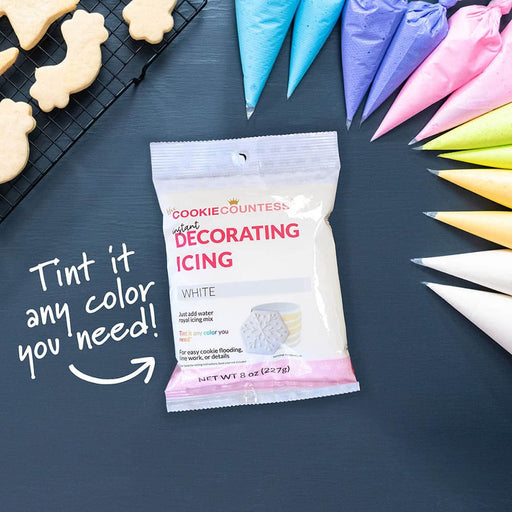
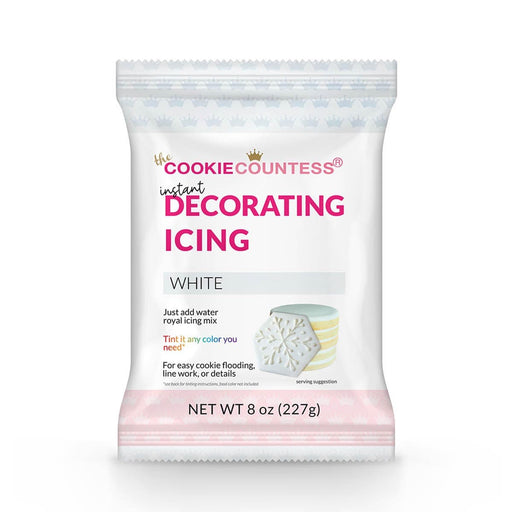
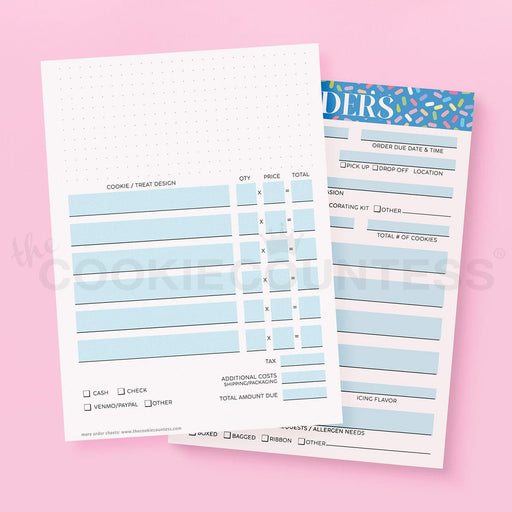
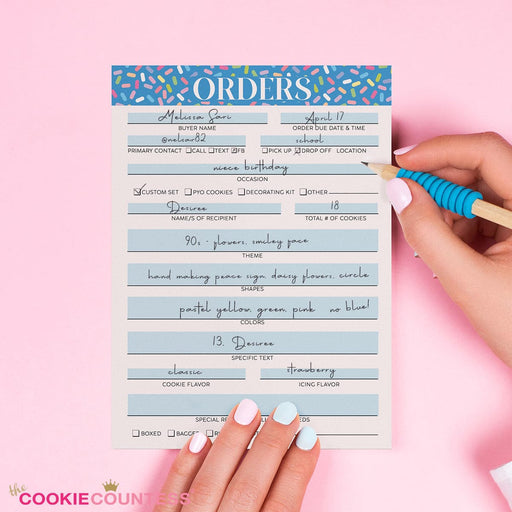



Leave a comment